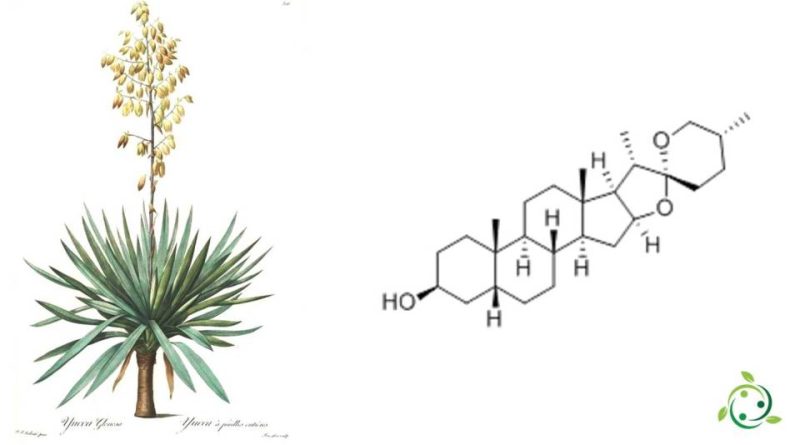Smilagenin
Smilagenin
Smilagenin, whose term in the official IUPAC nomenclature is: (1R,2S,4S,5’R,6R,7S,8R,9S,12S,13S,16S,18R)-5′,7,9,13-tetramethylspiro [5-oxypentacyclo[10.8.0.02,9.04,8.013 ,18]icosane-6,2′-oxane]-16-ol, is a novel non-peptide neurotrophic factor inducer.
Smilagenin has the chemical formula: C27H44O3 and is present in nature in various plants such as, for example: Yucca gloriosa, Yucca aloifolia and other species.
Smilagenin readily reverses the free radical neurotoxicity produced by 1-ethyl-4-phenylpyridium (MPP+) in dopaminergic neurons and reverses the decrease of neuronal growth factors and dopamine receptors in the brain. Preclinical work with smilagenin has shown that it is neuroprotective against beta-amyloid and glutamate damage that contribute to Alzheimer’s disease and reverse changes in the area of the brain involved in Parkinson’s disease.
Smilagenin acts as a protein synthesis stimulant by restoring protein levels that are altered in the aging brain, reversing the loss of nerve receptors in the aging brain and potentially allowing for the regrowth of neural connections. It thus provides an entirely new mode of action with potential significance for diseases associated with brain aging.
Smilagenin is part of a family of phytochemicals isolated from traditional treatments for the elderly that have previously been shown to offer significant benefits in the treatment of senile dementia.
Warning: The information provided is not medical advice and may not be accurate. The contents are for illustrative purposes only and do not replace medical advice.

